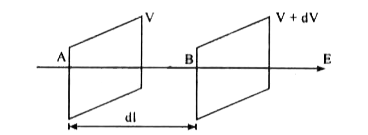A Fuse is an integral part of any circuit. Even the most basic electrical and electronic circuits uses Fuses. So why do we use fuses and how does a fuse work?
Why is a fuse used?
The job of a fuse is to primarily protect a circuit by carefully selecting a material that melts and breaks the flow of current in a circuit when the upper limit of the current reaches in the circuit.
The Physics behind Fuse
An electrical current creates a potential difference, and we know that dV=-E*dl, the scalar product of E and dl is the voltage drop.
To achieve this, first, we need to know the current flowing through the fuse and the resistance of the fuse material. Also, we need to see the melting point of the fuse material.

Heat balancing
Once we identify these things, we need to know the heating due to I^2*R. Once it is known, we can see if the heat balance is there or not. Firstly, the heat is generated in the fuse due to I^2R heating. At the same time, the heat is dissipated from the fuse to the surroundings. If the heat generated is more than the heat lost, then slowly, the melting point of the fuse’s material is reached. So, if the rate of I^2*R heating is more than the rate of heat lost to surroundings, the material keeps getting hotter and hotter, and eventually, it melts down and breaks the circuit.
Kirchhoff’s loop rule
We can find the voltage across the fuse using Kirchhoff’s loop rule Summation of V-IR=0.
First, apply the dV=-E*dl equation across the two terminals of the fuse. Then Integrate it over the entire length, we get V=-E*L so that we can get the Electric field value.
The diagram below shows the Electric field E vector, length element dL vector, direction, and the fuse material.

(click here for image credit)
The E and dL vector angle is zero degrees; we know that cos(0 degrees)=1. So the vector equation reduces to simply deltaV=-E times dL (a scalar equation).
We can relate this discussion to our original problem, “The Fuse problem.” The voltage applied across the fuse can be found using Kirchhoff’s loop rule equation V-I*R=0. We can see the I^2*R heating if we know the current and resistance. Also, we can find the electric field E (magnitude) using E=V/L. Beyond a certain point, the electric field breakdown occurs, and then the fuse won’t work. Or the fuse can break due to melting that can happen due to excessive current.
The idea is to save the costly circuit components by sacrificing a fuse’s cheaper item. And this is the whole idea behind the working principle of a fuse.
To get an online physics tutor to understand concepts like this, contact us on WhatsApp.
Author
-

5 years of experience as a tutor, mentor, and content writer. I have an M.Tech. in Electrical Engineering.
I can provide online tutoring to help you understand the electrical engineering subjects, viz., electrical machines, network theory, control systems, power electronics, measurement and instrumentation, signals and systems, analog and digital electronics, electromagnetic theory, etc., like no other tutor. I am proficient and have experience, especially in handwritten assignments and exam preparation. I watch sci-fi movies and play with my dog when I am relaxing.
